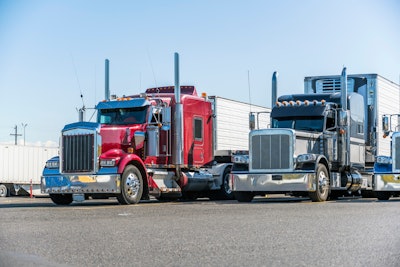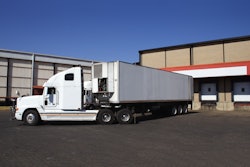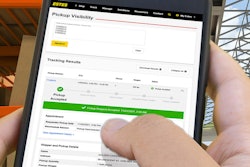
With tighter commercial truck greenhouse gas emissions regulations poised to take effect in 2027, most of the industry seems to agree that truck pre-buy activity will be substantial next year and into 2026, said Chris Visser, director of specialty vehicles at J.D. Power.
At a recent media event, Magnus Koeck, vice president of strategy, marketing and brand management for Volvo Trucks North America, said his company is already seeing signs of pre-buy activity, particularly among private fleets. He anticipates a “massive pre-buy effect” in 2026, with orders ramping up through 2025, and advised fleets to get orders in early if they want to assure availability prior to 2027.
Dan Moyer, senior analyst of commercial vehicles at FTR Transportation Intelligence, noted that FTR’s latest version of its Truck & Trailer Outlook report forecasts a modest level of over-buy activity in the Class 8 and Classes 6-7 markets ahead of the 2027 emissions regulations.
This activity is expected to start in the second quarter of 2026 and continue until the first quarter of 2027, as some fleets aim to avoid anticipated equipment cost increases associated with the new regulations.
“Despite this over-buy, FTR’s baseline economically derived demand (replacement demand + new units purchased due to freight growth) forecast for 2026 was already projected to be high, making the overall overbuy impact moderate,” said Moyer.
More fleets are getting educated about what’s ahead, said Paul Rosa, senior vice president of procurement and fleet planning at Penske Truck Leasing. “Many of those fleets that now understand the road ahead are now figuring out their fleet plans. They have expanded their decision making from year-to-year to what they need to do to cover the next three years.”
Ahead of the 2027 emissions pre-buy, there is a flurry of pre-buy activity currently for fleets domiciled in Oregon, Washington, Massachusetts, New York, and New Jersey, due to the California Air Resources Board's (CARB) Advanced Clean Truck (ACT) regulations starting in January 2025, said Rosa. ACT rules require truck and engine manufacturers to sell zero-emissions vehicles, or near-zero-emissions vehicles, in increasing percentages of annual sales from 2024 to 2035.
The tipping factors
According to an industry-wide survey by Fleet Advantage, sent to more than 3,000 transportation fleet executives, 23% said they are either unaware of the CARB mandate or are still unsure about it.
In a poll of CCJ readers over the last two weeks asking how 2027 emissions regulations would influence their Class 8 truck buying plans for the 2025 and 2026 model years, 48% said they will not be making any changes, while 28% said they will buy fewer trucks. Only 14% said they will buy more trucks, and 13% will buy the same.
Koeck estimated that meeting 2027 emissions standards will add about $20,000 to the cost of of a Class 8 truck, and the desire to avoid higher anticipated costs could drive up over-buy demand, noted Moyer.
More awareness by fleets, too, will boost requests to buy sooner than normal, said Rosa. “Absent of recession or some geopolitical event, I don’t see any factor diminishing the pre-buy frenzy.”
On the other hand, Moyer pointed out that ongoing challenges such as labor and parts shortages and supply chain disruptions are likely to limit the industry’s capacity to significantly ramp up production, thereby capping the extent of an over-buy surge.
Fleet Advantage’s survey also highlighted that while 36% said they have a CARB pre-buy procurement plan in place, 64% either do not have a plan or are unsure if their organization has a plan.
Rosa pointed out that for fleets operating in California and ACT opt-in states starting in 2025 (Oregon, Washington, Massachusetts, New York and New Jersey), they must start implementing a procurement plan. While it’s not too early for most states, it’s almost too late for the aforementioned ACT opt-in states, as there are only a few months left of current year production.
“Unless they plan to purchase a ZEV also, they most likely won’t be able to purchase an ICE vehicle,” said Rosa.
Given the added expense and new technical complexities of next generation engines and aftertreatment, Rosa added that there's very few compelling reasons for fleets to wait until model year 2027 to buy new trucks.
“The only scenario where a fleet would delay getting what would be a less costly and more predictable performing vehicle (pre-MY 2027 units) is they don’t need to add or replace any units," he said.
However, Visser said, “Typically, in a pre-buy, some percentage of new truck purchases are delayed until the new technology has been in service for two to three years. That's the other side of pulling ahead deliveries to get the last of the pre-2027 technology.”
It won’t be “too late” until OEM order books for pre-2027 trucks are full, which should occur sometime in 2026, said Visser.
Moyer suggested that fleet managers might want to consider these factors in their procurement plan:
- Total cost of ownership (including vehicle purchase price, fuel efficiency, repair/maintenance costs, residual value)
- Lease versus purchase decision
- Upcoming/current state and federal emissions regulations
- Adopting new technologies improving safety and efficiency
- Vehicle specs tailored to fit fleet needs
- Considering alternative fuel options, driver availability
- Maintenance and repair infrastructure
- Optimal trade cycle timing
- OEM customer service
- Environmental and sustainability impact













